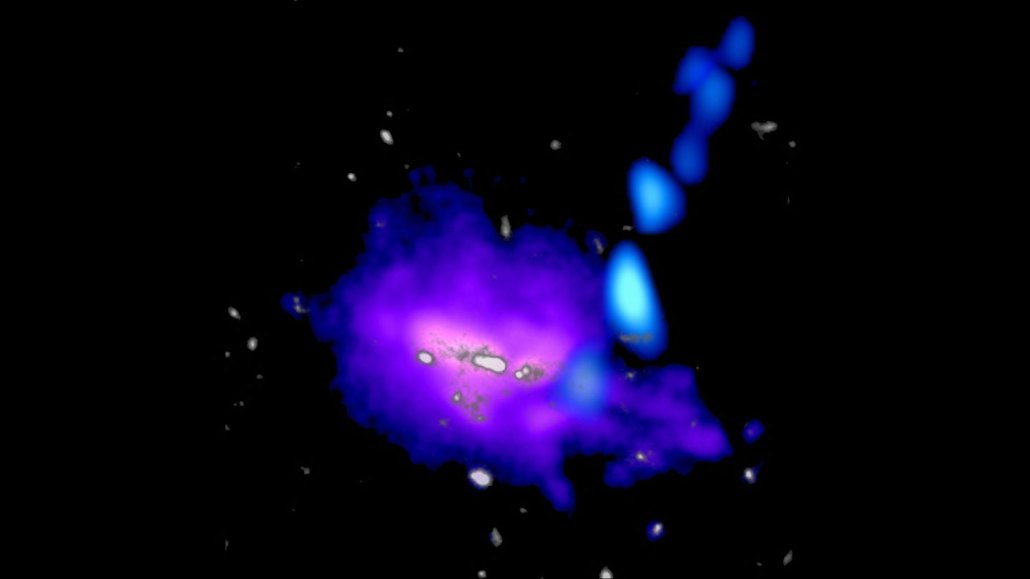
A long stream of cold cosmic gas, highlighted in light blue, flows into the Anthill Galaxy in this image from the ALMA telescope array. A large reservoir of gas inside the galaxy is shown in purple and dark blue.
B. Emonts/NRAO/AUI/NSF

A long stream of cold cosmic gas, highlighted in light blue, flows into the Anthill Galaxy in this image from the ALMA telescope array. A large reservoir of gas inside the galaxy is shown in purple and dark blue.
B. Emonts/NRAO/AUI/NSF